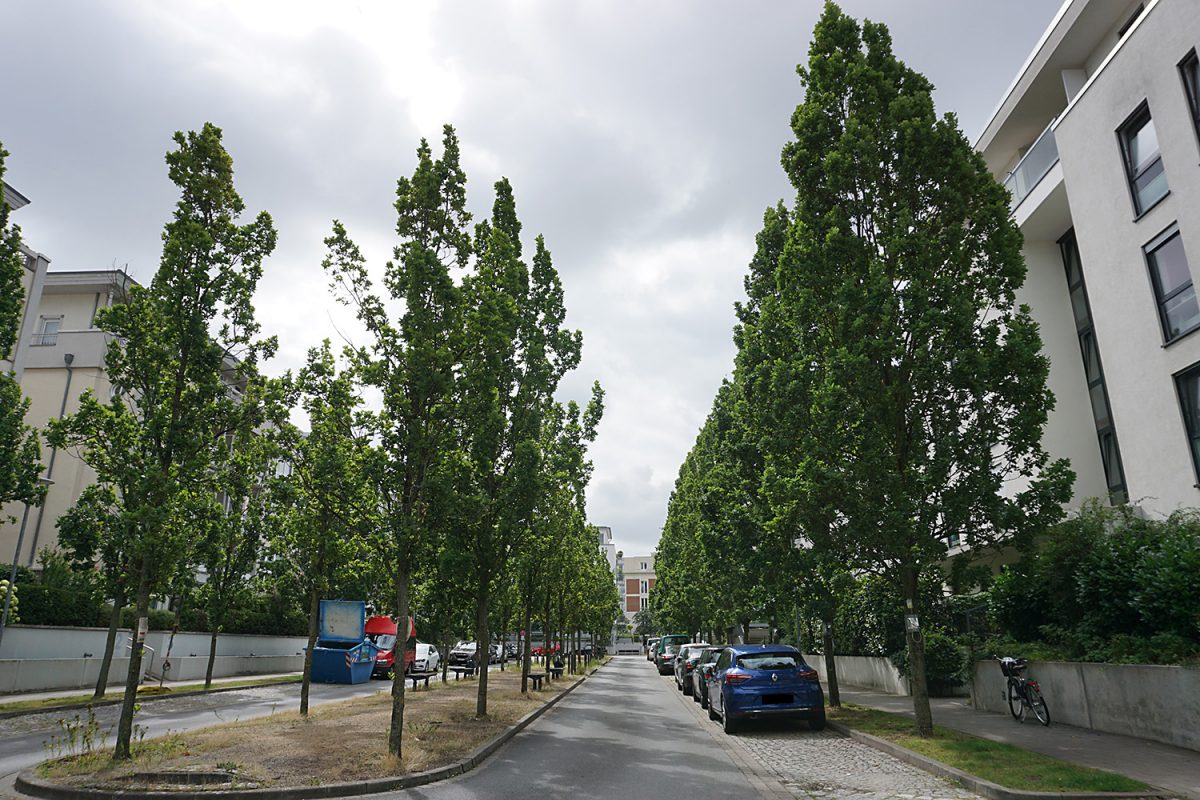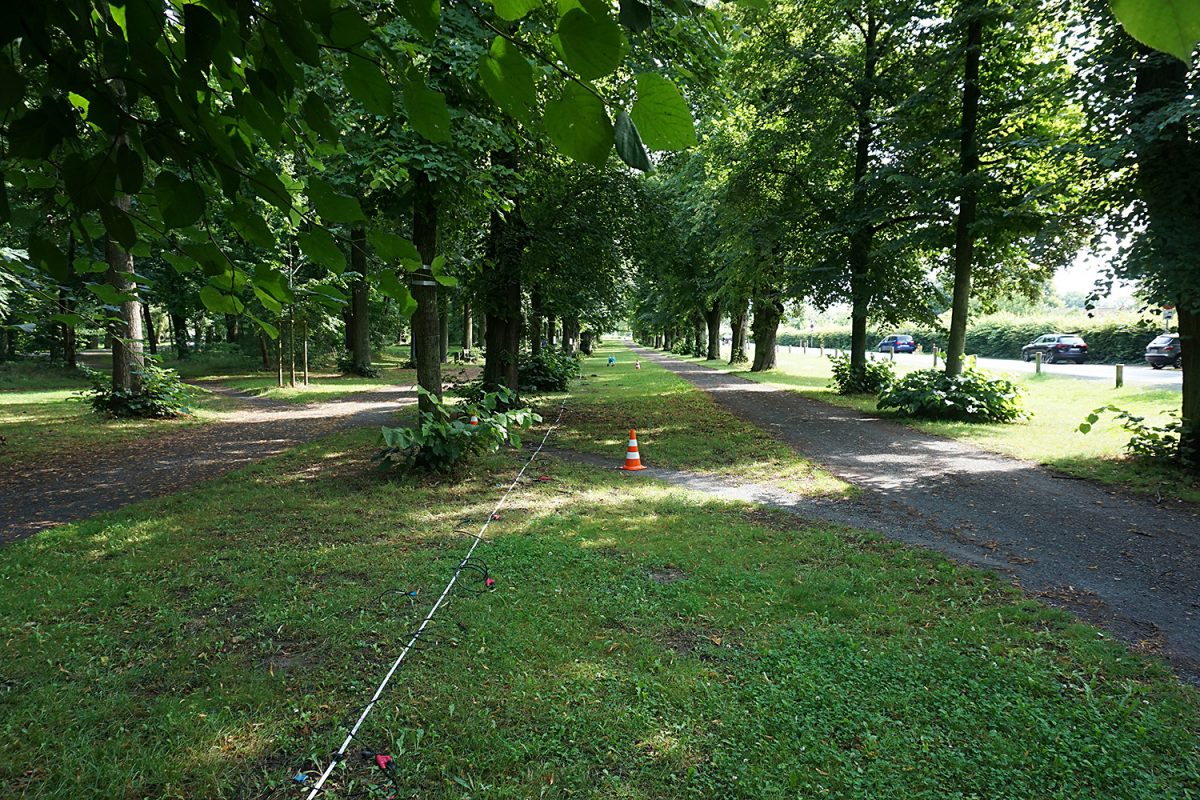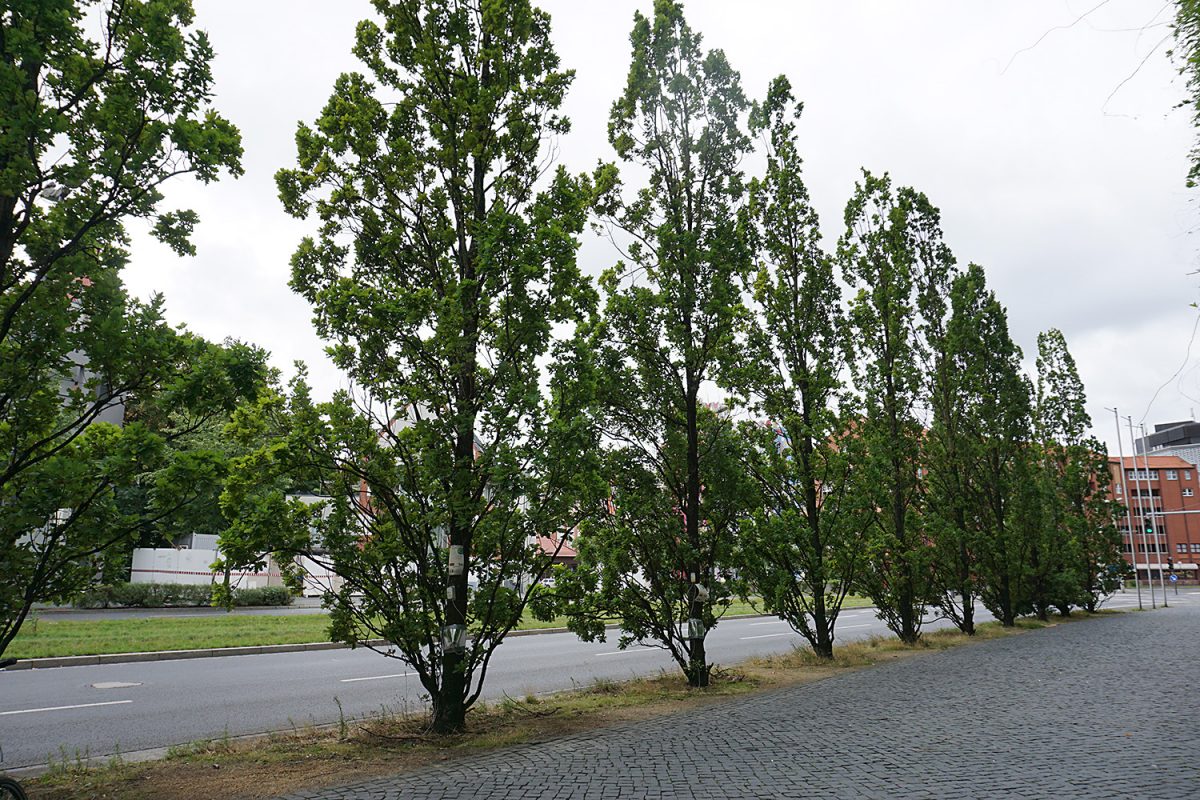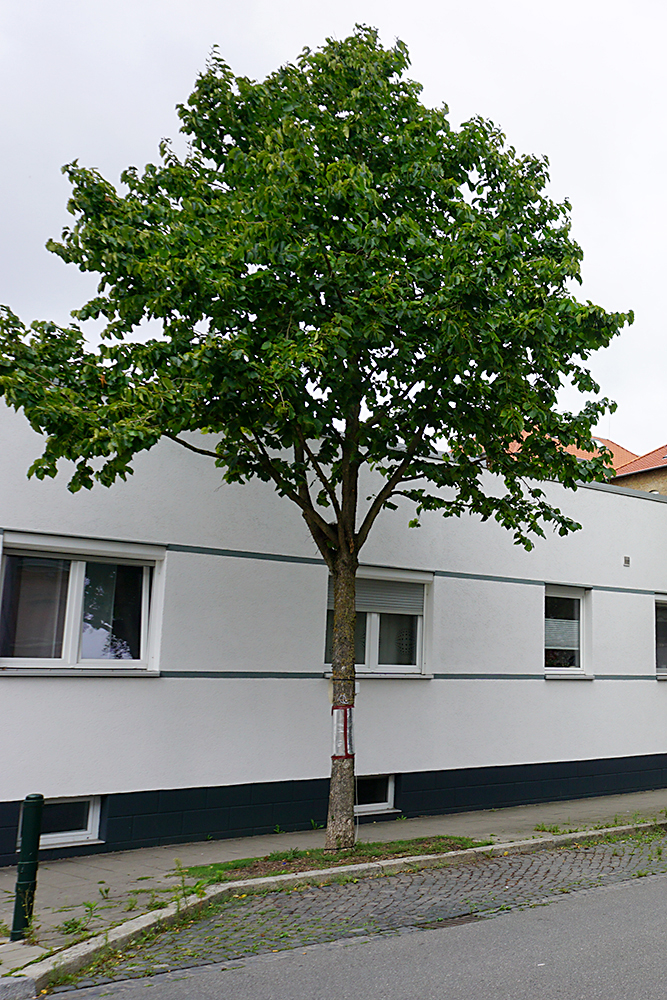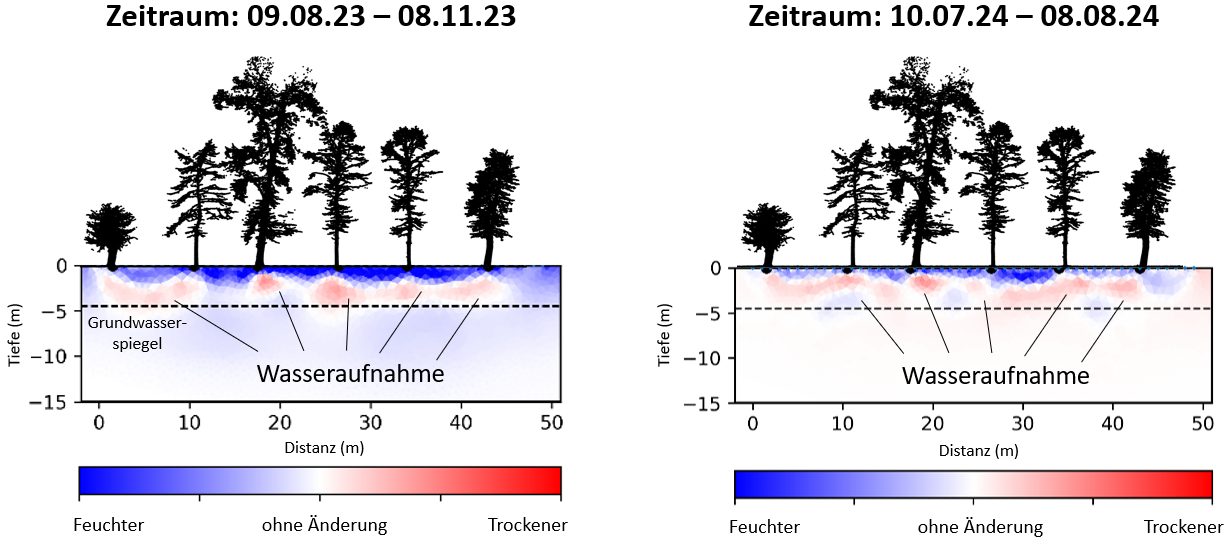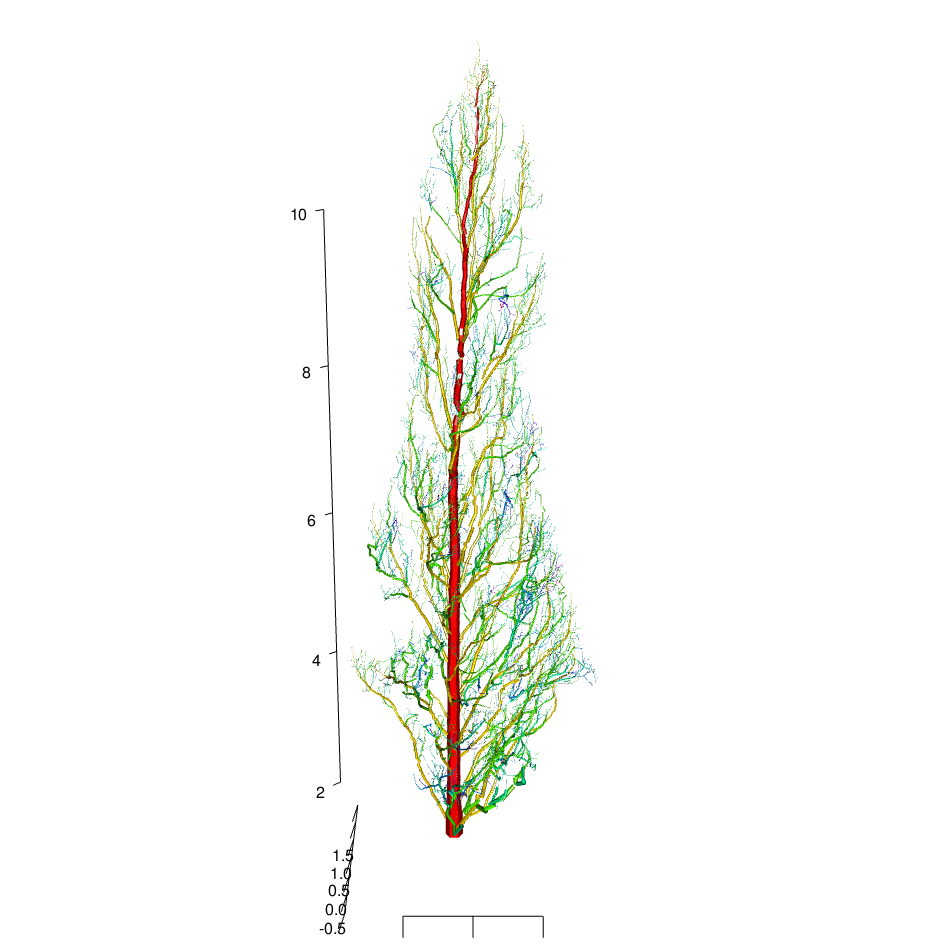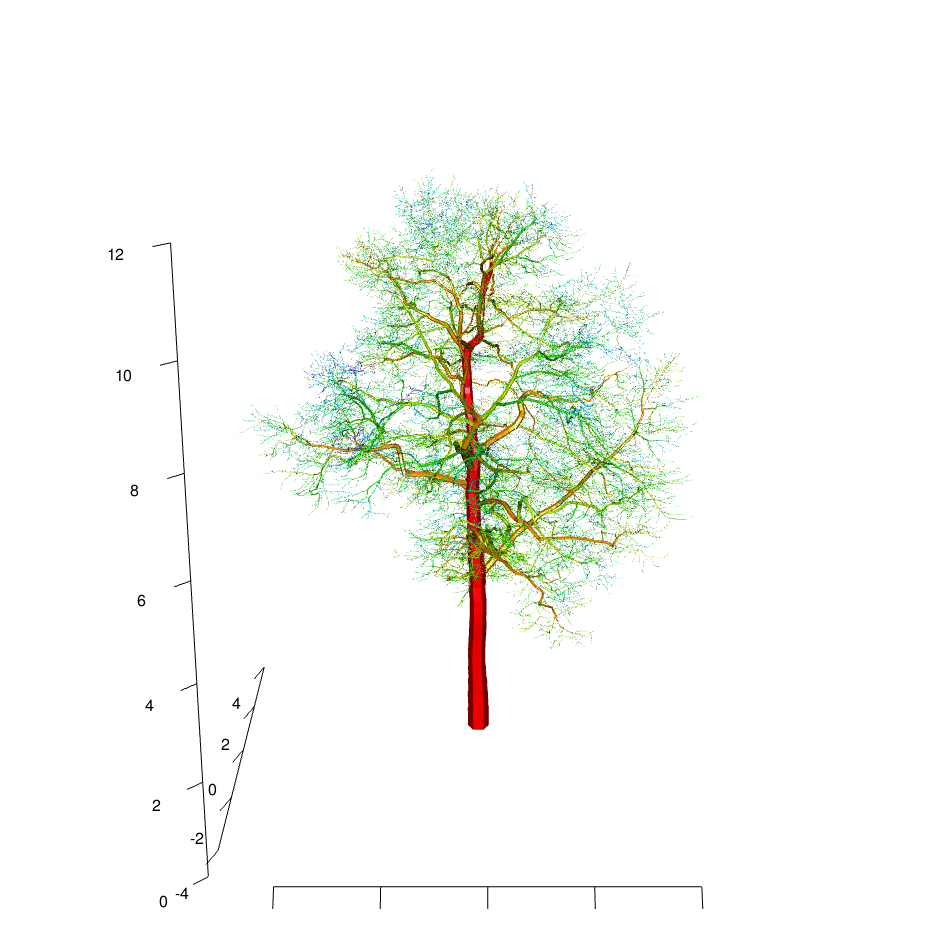Healthy urban trees despite heat and concrete Researchers are investigating how trees deal with soil sealing and water scarcity
Anyone walking through Braunschweig has probably already noticed them: small grey boxes on trees, connected to measuring devices in the ground and on the trunk. They are part of the ‘CliMax’ research project, which is investigating the health of urban trees under different degrees of soil sealing. In times of increasing drought and rising temperatures, an interdisciplinary team of researchers from the Julius Kühn Institute (JKI) and Technische Universität Braunschweig is investigating how climate, soil sealing and water availability affect trees – with the aim of developing strategies for climate-resilient urban greening. In this way, ‘CliMax’ can provide urban planners with crucial information for the sustainable design of urban green spaces.
Since 2022, scientists led by Dr Mona Quambusch and Vera Hörmann from the Julius Kühn Institute (JKI) have been researching the health of urban trees at a total of nine locations in Braunschweig. They want to find out how the three tree species Turkish hazel (Corylus colurna), small-leaved lime (Tilia cordata) and English oak (Quercus robur ‘Fastigiata’) cope with current climatic and site-specific conditions. The aim is to determine the optimal and limiting conditions for maximum tree health and thus also carbon sequestration under future climate, to evaluate the suitability of the three tree species and to develop adaptation measures.
Specifically, the team is investigating the following questions: How does soil sealing, for example with asphalt, affect water availability and the trees’ water uptake? From which soil depths and water sources do the plants obtain water? Does tree stress increase in relation to the degree of soil sealing? Do trees in sealed locations experience more stress than those in parks? How much carbon do the trees bind?
A look underground: geoelectric measurements
To answer these questions, the researchers are using a broad portfolio of methods. For example, they need to take a look underground. But how can you assess the water conditions underground without drilling in the shopping area or digging pits? Using geophysical measurements, Professor Matthias Bücker from the Christian-Albrechts-Universität zu Kiel (previously at the Institute for Geophysics and Extraterrestrial Physics, TU Braunschweig) and doctoral student Johannes Hoppenbrock (TU Braunschweig/JKI) make changes in the water conditions in the soil visible.
They mainly use geoelectric measurements for this. How does it work? A small electric current is fed into the ground via two nails inserted into the soil. The electric conductivity of the soil can then be determined from the current strength and the voltage measured at two other nails. This in turn provides information about the subsoil, the geological conditions and, above all, changes in the water content in the soil. If you observe changes in electrical conductivity or its reciprocal value, the specific electrical resistance, by repeated measurements, poorly conducting areas can be recognised directly under the trees, which can be traced back to drier soil and thus to the water absorption of the trees.
Water absorption: soil moisture and sap flow sensors
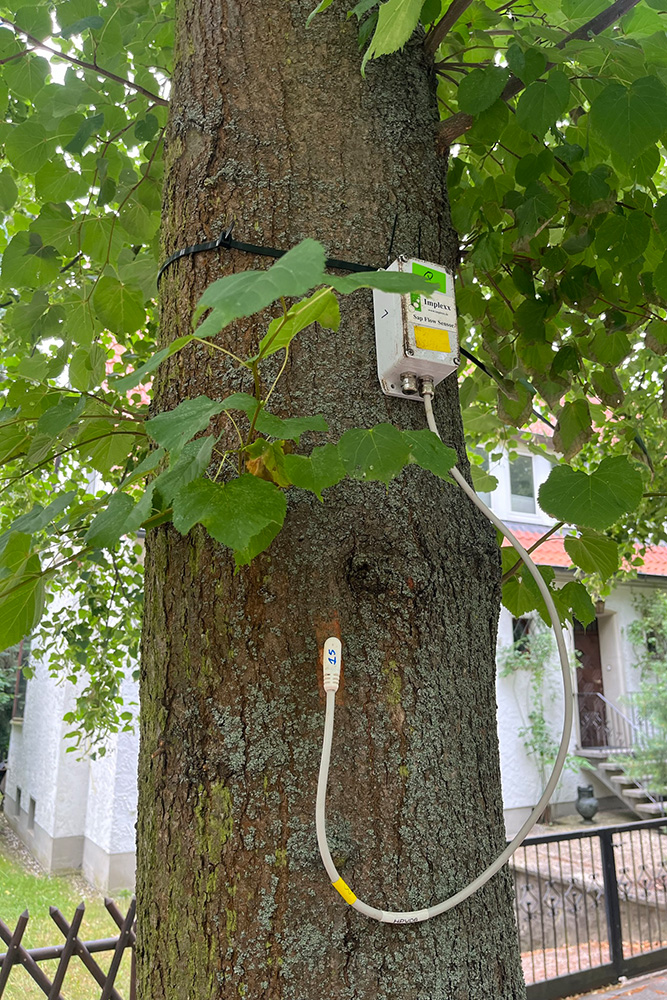
Some passers-by in Braunschweig have probably already noticed the measuring devices on some of the trees. Photo credits: CliMax
In order to determine the movement of water in the soil and the water uptake by the plants, the ‘Isodrones’ research group from the Institute for Geoecology at TU Braunschweig installed soil moisture sensors up to two metres deep. These continuously measure the water content of the soil and can thus provide information on how much water seeps away at the sites and how much disappears through evaporation and water uptake from the soil.
In addition, so-called sap flow sensors were installed on the tree trunks to measure the water consumption of the plants. The best thing about this project is that the recorded data is freely accessible to everyone. This means that interested citizens, schools and other scientists can find out about the soil water conditions and water absorption rates of the trees under investigation at any time.
From what depths do city trees get their water?
In the context of climate change, it is important that trees do not rely solely on the upper soil layers, which dry out more quickly at higher temperatures and are also heavily polluted by salt and urine. But from what depths do city trees get their water? To investigate this, Dr Matthias Beyer, head of the ‘Isodrones’ research group, and his team use stable water isotopes that occur naturally in water. Since some water molecules are heavier than others, natural processes influence their distribution: during evaporation, ‘light’ water molecules tend to escape into the atmosphere, while ‘heavy’ ones accumulate in the soil. When it rains, the ‘heavy’ water molecules prefer to precipitate out of the cloud. By analysing the distribution of these heavy and light water molecules and their absorption in the plant, scientists can estimate the water absorption depths or assess groundwater use.
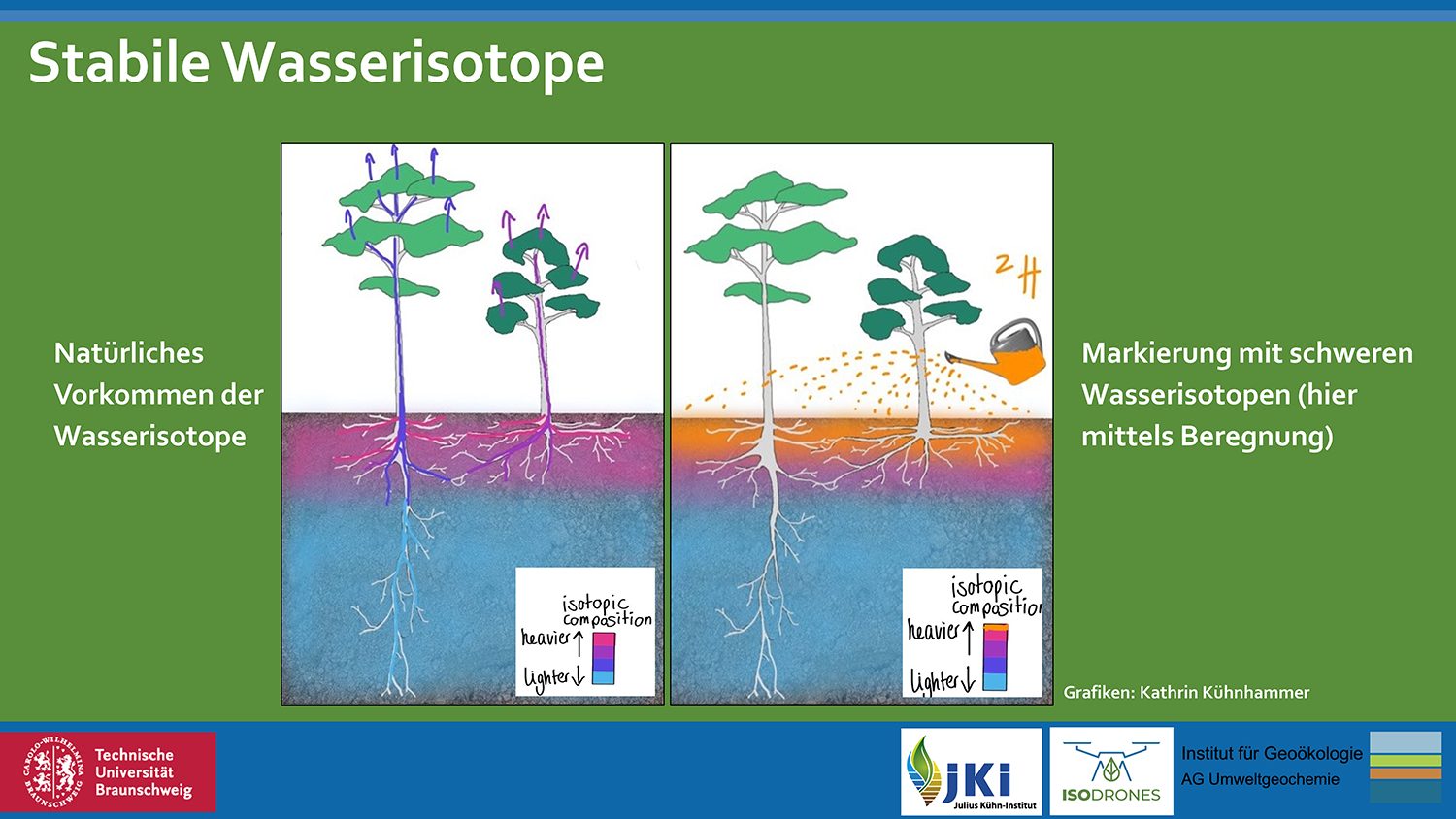
The scientists can estimate the water absorption depths or assess the use of groundwater by analysing the distribution of heavy and light water molecules and their absorption in the plant. Image credits: CliMax
The water content in the leaf
Above ground, JKI doctoral student Vera Hörmann focuses on tree health: she analyses photosynthesis directly on the leaves and collects leaf samples to determine the leaf water content and the so-called leaf water potential. When a tree is stressed, the leaf water content and water potential decrease, while the suction tension of the leaves increases. In addition, photosynthesis performance changes, measurable by the proportion of sunlight that is reflected back unused. The water use efficiency of the trees can also be derived from the leaves, which allows conclusions to be drawn about how optimally the trees utilise the water. Simply put, it can then be shown how much carbon the trees can bind per litre of water used.
3D models of the trees to determine the biomass
Carbon is stored in the biomass of the trees. To estimate the biomass of urban trees, 3D models of the trees were created using terrestrial laser scans by Dr Michael Strohbach from the Institute for Geoecology at TU Braunschweig.
And the life cycle of a tree is also examined: Because the cultivation, planting and care of city trees causes emissions. When have trees stored more CO2 in their biomass than was produced during their cultivation and care? To answer this question, a life cycle analysis is carried out. Interviews are conducted with experts, and the results obtained are summarised in a CO2 balance, thus identifying potential savings.
Little water stress in the past two years
But what are the results of these sometimes elaborate investigations? “The conditions for our urban trees are becoming increasingly difficult. However, the two years we observed were exceptionally wet. Accordingly, our measurements showed almost no signs of water stress during this time – even at the sealed sites,” says Dr Matthias Beyer. This is actually good news. Despite the relatively wet years, the scientists were able to gather valuable insights. “At all unsealed sites, water availability in the deep underground, i.e. at more than one meter soil depth, is considerably higher than at the partially and fully sealed sites. Accordingly, our data indicate that even in the summer months, deep water resources down to two metres depth are used at the unsealed park sites. By contrast, in previous summers, the trees at sealed sites used relatively more water close to the surface, which in drier years will inevitably become a problem for the trees’ water supply.”
In the case of sealed soils: trees adapt to water availability
Of the three tree species studied, the Turkish hazel consumes by far the most water. These fast-growing trees required more than 7,000 litres between July and October 2024. The small-leaved lime is significantly more frugal, requiring around 2,000 to 3,000 litres over the same period. The lowest water consumption in 2024 was measured in the observed durmast oaks, at less than 1,000 litres. However, it is not only the total amount of water that is crucial, but also how efficiently this water is used for carbon incorporation. “In terms of water-use efficiency, our data clearly show that it is higher at the sealed sites than at the unsealed sites. This is a typical adaptation of trees to a lower availability of water. They use the little water they get more efficiently.”
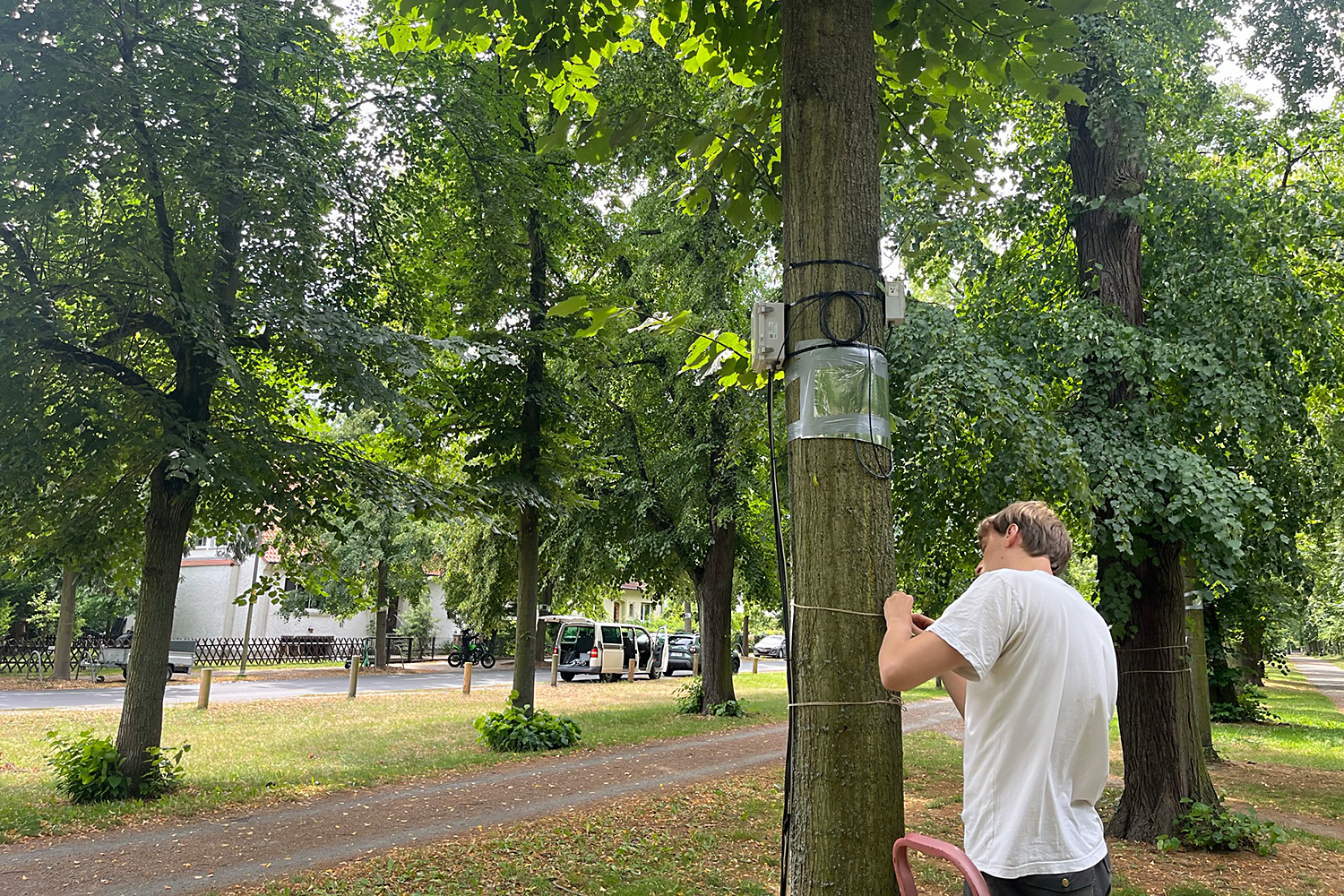
The scientists have installed so-called sap flow sensors on the tree trunks to measure the plants’ water consumption. Photo credits: CliMax
Among the tree species studied, the small-leaved lime has the highest water-use efficiency, followed by the English oak. The Turkish hazel requires the most water and is somewhat more ‘wasteful’ than the other species studied, and therefore has the lowest water-use efficiency. Nevertheless, in absolute terms, it sequesters the most carbon overall. The columnar oak, on the other hand, stores the least carbon due to its low total water use. The CO2 balances show that trees have offset the emissions associated with planting and maintenance (transport, preparation of the planting pit, irrigation water) after about 14 years by building up biomass. Short distances to the tree nursery and a smaller number of watering trips have a particularly positive effect on the balance.
What conclusions can be drawn from the research?
“This project has allowed us to collect incredibly valuable information for adapting to future climate conditions,” says Beyer. “From a scientific point of view, it would be interesting to see how urban trees perform in a drier year in 2025.” What the scientists can definitely say is that the narrow planting pits, which are very sandy at a depth of more than 50 centimetres, will pose a massive problem in the future. Due to the low tree density, urban trees are under less competitive pressure for water than forest trees, for example. Nevertheless, the water availability at sealed sites urgently needs to be increased to promote resilient urban trees.
Young trees must be given the opportunity to develop deep roots in order to survive periods of drought better. This begins in the tree nursery. After being moved to the city, the trees are initially watered ‘from above’, which is important for young trees. However, this ‘habituation’ of the trees to a secure water supply from above probably results in little or no development of deep roots. If irrigation is stopped (usually five years after being moved from the tree nursery), these trees are often no longer able to adapt quickly enough to survive dry periods. In the future, it will therefore be increasingly important to accustom young trees to light water stress in order to trigger deeper root growth. This saves expensive irrigation water, but must be tailored to the water stress of the plants. Modern sensor systems can help here, and the researchers will be involved in their development.
Decision support for future plantings
For the researchers involved in the joint project, CliMax is just the beginning of their investigations: “In the project, we were able to show in detail how trees behave in different sealing scenarios. This knowledge alone can help as a decision-making aid for future plantings.”
But there are still many unanswered questions: “We would, of course, like to continue the project – in the sense of longer-term monitoring, but also to expand it to other tree species and locations.” The scientists would also like to know more about the connection between the trees and the groundwater and the capillary zone. The researchers are hoping for further funding to learn even more about the health of our urban trees.

